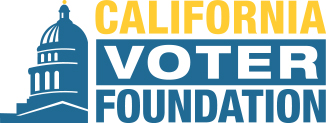Excerpt:
The election is over, and no more ballots can be cast. But campaigns in tight congressional races across California are scrambling to make sure their supporters’ votes are counted.
Through the increasingly common process known as “ballot curing,” campaigns are contacting voters whose ballots were not counted because of a technicality and giving them a chance to correct their mistakes. That could mean asking them to correct their address or add their signature to an envelope they forgot to sign.
The stakes are especially high in California’s battleground districts, where voters could determine which party will control the House of Representatives next year.
Of the 11 congressional races nationwide where the Associated Press has not called a winner as of Wednesday, five are in California. Republicans need only one more win to achieve a majority in Congress — and obtain the elusive trifecta of being in charge of the House, Senate and the presidency.
In several tight races across California, both parties are rallying volunteers to help them reach voters and fix any problems with their ballots. They are fanning out across Orange and Riverside counties where Republicans and Democrats are in a furious battle for key seats in the House.
“Every vote does count,” said Kim Alexander, president of the California Voter Foundation. “People say it all the time, but you can actually see it with ballot curing in these close contests.”
The process has taken on heightened importance as California has shifted to predominantly conducting elections by mail. This year, every registered voter was mailed a ballot. Voters could send their ballots back through the mail or drop them off in designated boxes or voting centers.
- - - - - - - - -
Another common issue is the signature on the ballot envelope does not match a voter’s signature on other forms of identification.
“Young voters and first-time voters are more likely to have problems when they vote by mail because they’re just not used to using the mail, period. And they don’t have signatures that are well formed,” Alexander said. “The idea that somebody would have their ballot rejected when they’re voting for the first time is also very disheartening. We want people to have a positive first-time voting experience.”
According to state law, election officials must notify voters if there are issues with their ballots by reaching out via calls, texts or emails. Voters then have until Dec. 1 to fix their ballots and make sure they’re counted. As of Tuesday, California had roughly 161,000 ballots remaining to be cured before they are rejected.
In the March primary, a total of 108,982 vote-by-mail ballots were rejected, according to the California Voter Foundation — or 1.56% of those cast.
“It’s honestly really heartbreaking when you see these piles of ballots in elections offices,” Alexander said. (Full Story)

